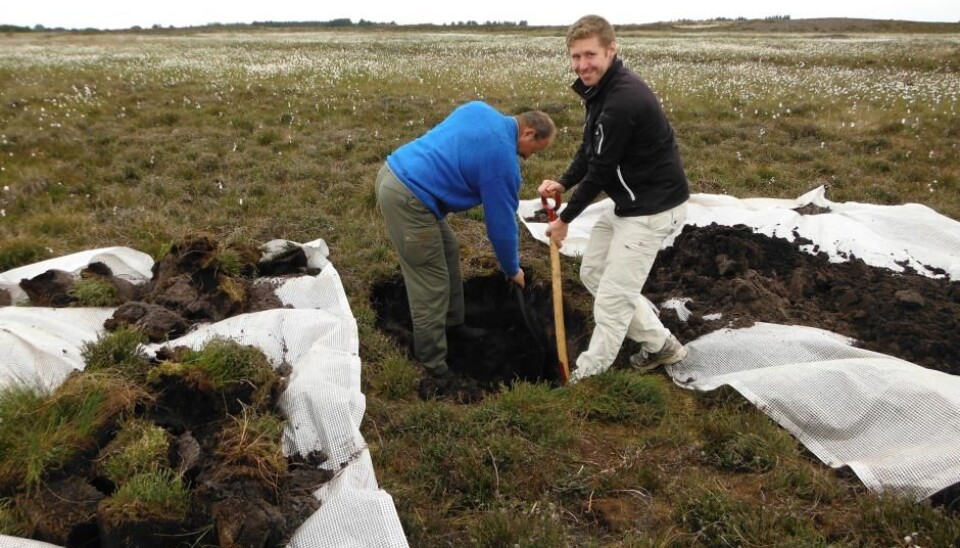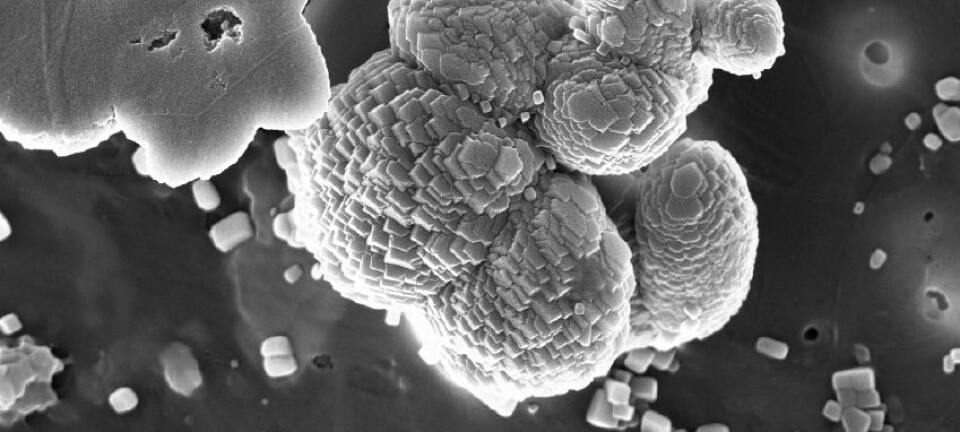
Is all soil more acidic than we thought?
Our research suggests that it is and that we’ve been measuring soil acidity wrong for years. This could have big implications for our understanding of many fundamental biological processes.
Soil acidity, or pH, is essential for the existence of plants, animals, and bacteria in soil, how organisms work together, and the presence of toxic chemicals.
So apart from being one of the most important environmental factor for ecosystems, pH is also a significant factor in the traditional risk assessment of poisonous chemicals where their availability to plants and animals depends on pH.
New, robust field-electrodes allow us to measure the soil pH directly in the soil rather than in the laboratory, which is the traditional method.
As part of a new study, we measured pH in forest and heath soils, and the results showed that most measurements were extremely acidic, measuring less than pH 2.6 and 3.2, when we would have expected them to be around pH 4.
One pH unit means that there are ten times as many hydrogen ions in a sample. In these extreme low pH conditions, plants and burrowing animals are in theory exposed to a geochemical environment that is dominated by a high concentration of soluble iron compounds and other poisonous heavy metals. In other words, we wouldn’t expect plants or animals to thrive in such an environment.
Textbooks have taught us that organisms cannot live in soils of less than pH 3. But our results suggest that they do, and they are apparently alive and kicking. Our results are published in the scientific journal Soil Biology and Biochemistry.
But what can explain this deviation from what we would expect?
Read More: Sulphuric acid was the bedrock of the Industrial Revolution
Low pH indicates an acidic environment
pH describes the degree of acidity of a substance, expressed on a scale from 0 to 14. Lower pH indicates the presence of more hydrogen ions, which makes a substance more acidic.
The scale is also logarithmic, which means that a pH of 3 indicates ten times the number of hydrogen ions as pH 4.
So a soil of pH 3 is ten times more acidic than a soil that measures pH 4.
Read More: Acidic ocean water makes sea snails smaller
Lower pH when samples are measured in the field
We measured pH in the upper layers of soil in a heath and a forest throughout the growth season, from March to October.
We first measured the pH on site using a portable pH meter.
Then we took the same soil samples back to the laboratory and measured them again using traditional laboratory methods. This involves drying the sample, crushing it, and then adding deionised water to measure the pH of the soil-water solution.
The results were surprising, as the samples measured in the field were consistently 0.5 to 1 pH units less than those made in the laboratory. How the exact same soil samples could give such different answers was a mystery.
Read More: Acid rain still affects water quality
Abundant life despite what the text books say
Such low pH has never before been measured in natural soils.
According to common ecological theory, these low pH values should be inhospitable to biological organisms.
For example, at such low pH, the largely insoluble iron oxides and manganese-rich minerals should dissolve, making the soil water even more acidic. While most nutrients will be unavailable to animals, and most soil processes, such as the breakdown of organic matter, will occur more slowly.
This suggests that a large part of the nutrient-poor soils found in heaths, peat bogs, and coniferous forests, should be largely without biological life, which is clearly not the case.
We also found a rich content of fauna in the extremely acid heath soils. You can see some examples of these animals in the pictures below. One reason for the difference in measurements could be related to these tiny creatures.
In the laboratory, the first stage of analysing pH is to dry the soil samples. During this process all of these tiny animals will shrink to a size where they are no longer visible. The second stage is to crush the samples, which will now include these tiny animal remains.
We know that animal pH is typically neutral, between pH six and seven. So the question is, whether these animals, plants, and fungi, contribute to the soil pH measured in the laboratory, and whether this can explain the difference between the field and laboratory measurements?
This is what we will now investigate.
Read More: Scientists combat a tricky soil
We need a new method for soil pH
Our results have implications for many fields of research, from measurements of soil pH over time, to the study of the relationship between soil pH and biological and geochemical processes, such as the breakdown of organic matter, the availability of nutrients or toxins, the occurrence of species, and weathering processes.
They also mean that we should review how we measure pH around the world, and consider direct measurements instead of laboratory measurements.
And finally, they beg the question of what processes actually occur in soil to produce these low pH values and how the buffering capacity of soil (the ability of a soil to resist a change in pH) changes at such low pH.
The results pose some fundamental questions about what the actual pH of the Earth is and suggest that crushed animal remains may have skewed all previous laboratory measurements to higher values.
Read More: Arctic soils: a ticking climate time bomb
We don’t know enough about low-pH environments
There is a wealth of relationships between biological processes and soil acidity in the scientific literature.
The best example, is that of acid rain and forest death in the 1980s. But most of these are only described for soils with a pH greater than four.
We need more information on what happens in soils of a lower pH.
Climate research in the northern boreal forests or the Arctic, similarly rely on laboratory measurements of pH to study the release of soil CO2 into the atmosphere via respiration.
Read More: Charcoal makes African soil more fertile and productive
Incorrect pH measurements matter
So what’s the problem with incorrect pH measurements?
As scientists, we establish relationships between biological processes based on pH. This means that much of our understanding of these relationships is in the best case scenario incomplete, and perhaps entirely wrong.
All in all, we need much more research into the many processes that rely on accurate measurements of soil pH.
---------------
Read this article in Danish at ForskerZonen, part of videnskab.dk
Translated by: Catherine Jex










